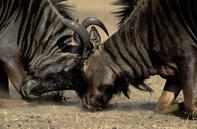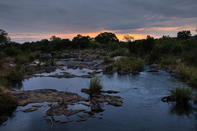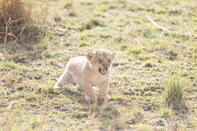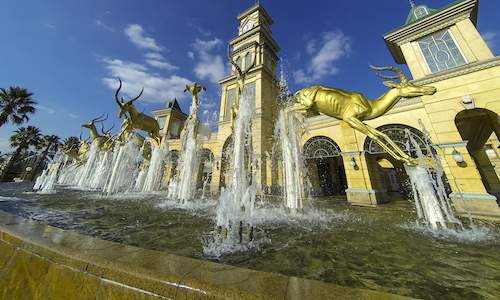The Sabi Stand-Off
It was make or break time for the Sabi Reserve. Either it was going to be declared a national park, as per the recommendation of the Game Reserves Commission, or it was going to be dissolved and developed by various commercial interests.

On the one side stood James Stevenson-Hamilton and his allies: Prime Minister Jan Smuts, the various Game Preservation Associations and a growing sector of the general public, won over by the Railways’ publicity for their Round in Nine tours.
On the other hand, several powerful groups still wanted the reserve carved up and the game destroyed. It would require luck, diplomacy and timing to make Cinderella (the reserve) into an official National Park princess. However, as is the way with Government, the political endgame proved to be complicated, divisive and a little tedious.
Awakening National Pride
By 1921, the central government had been drawn into the controversy, with the private landowners, the Department of Mining, the Department of Native Affairs and the Department of Lands all wanting their piece of the Reserve. It was clear that a round-table discussion was needed to settle the matter once and for all (again).
This initial conference was held in February 1921 and, initially, it didn’t appear that the outcome would be in the Reserve’s favour. However, James Stevenson-Hamilton took the opportunity to meet with the Minister of Lands, Deneys Reitz, and used all his powers of persuasion to bring the ex-Boer commander round to his point of view. Surprisingly, Reitz proved receptive to the idea. He felt that a National Park could contribute to a newly awakened sense of national pride.
Reitz also visited the park with some government representatives and was duly impressed (even though the steadfast warden refused the visitors’ request to do a bit of hunting while they were there!). The final decision of the conference was that the Sabi Reserve should indeed be declared a national park, but within smaller boundaries. Specifically, it was proposed that a large chunk of the western section of the reserve be deproclaimed and handed over to the Department of Native Affairs for the establishment of black settlements.
James Steven Hamilton grabbed the offer and reconciled himself to the loss of land in exchange for the promise of nationalisation. Today, this excised area is heavily-populated and includes sprawling communities such as Bushbuckridge, Acornhoek and Klaserie.
Tabling Legislations

It all seemed to be coming together. Prime Minister Jan Smuts was openly talking about tabling the necessary legislation before parliament and, in 1923, the Sabi and Shingwedzi reserves were merged and renamed ‘The Transvaal Game Reserve’. However, the land companies still refused to co-operate and continued to haggle with the government over land valuations. Smuts was forced to postpone his legislation until the issue was settled.
He could not risk the possibility that the draft bill would be thrown out of parliament, never to be re-tabled. By April 1926, the deal was signed. The land companies exchanged a total of 196 000 acres of land in the reserve for 135 000 acres on the outside. Several owners settled for financial restitution, which totalled £40 000. In addition, the triangular piece of government land between the Olifants and Letaba rivers was added to the reserve. The final hurdle was down and the road ahead seemed clear.
However, there was still the danger that the bill would be turned down by parliament so, around this time, James Stevenson-Hamilton and his staunch supporter Stratford Caldecott hit on a sure-fire way to win support for the National Park. As James Stevenson-Hamilton describes it, “We were talking of the early beginnings of the Reserve and I was showing him a copy of the first proclamation of 1898 signed by President Kruger.
He looked hard at me, and catching on, I said at once ‘Of course you are right, that is the obvious name – ‘The Kruger National Park’! Few would be willing to oppose the founding of an institution linked with the name of the great president, and one felt that much of any possible opposition would thus automatically collapse.”
It’s All in the Name
In his private journal, James Stevenson-Hamilton was more forthright. “The man who really was responsible was RK Loveday… but the ‘Kruger stunt’ is I think of priceless value to us, and I would not for the world do aught but whisper otherwise… I wonder what the old man, who never in his life thought of wild animals except as biltong.
I wonder… what he would say could he see himself depicted as the ‘Saviour of the South African game’!!!” With this little secret under his hat, James Stevenson-Hamilton presented the ‘Kruger’ idea to Grobler, who was naturally thrilled with the opportunity to honour his illustrious forebear.
In short order, the name was officially proposed by Judge JAJ de Villiers to the National Monuments Commission in December 1925, and it was immediately adopted. Some English-speaking citizens didn’t like the name, claiming that it was partisan and politically loaded. Alternative suggestions included ‘The South African National Park’ and even ‘The National Milner Park’, after Lord Milner who had re-proclaimed the Sabi and Shingwedzi reserves after the 2nd Anglo-Boer War. But these names were quickly brushed aside and the Kruger Park was born.
A New Organisation

And so, after the Kruger Park got its name, James Stevenson-Hamilton was suddenly surrounded by supporters. This gave James Stevenson-Hamilton considerable satisfaction and he would often smile inwardly when a former enemy “endeavoured to acquire credit for having been among the first to push on the scheme.
Truly nothing succeeds like success!” Grobler also had the good sense to propose that the management of the park should remain outside of politics, so that the protected area could not be used as a political pawn every time there was an election. He, therefore, set up a board of 10 unpaid trustees who would be devoted to the preservation of game above all else.
This ‘National Parks Board’ would be responsible for the Kruger Park and any other reserves subsequently declared in the Union. The Parks Board would continue to run the Kruger until it was transformed into a new organisation, South African National Parks (SANParks), after 1994.
Finis Coronat Opus
With everyone on board, the time was right to prepare the necessary legislation and put it before parliament for a vote. Dr Schoch, legal advisor to the government, had already written up a draft National Parks Ordinance back in 1923, under instructions from Jan Smuts and Deneys Reitz (both of whom were subsequently excluded from the National Park narrative).
This was revised in early 1926 into the National Parks Act. Finally, on the 31st of May 1926, Piet Grobler introduced the Act to parliament. The bill was seconded by Jan Smuts, now the leader of the opposition, and several long-standing supporters of the reserve (including HB Papenfus and Deneys Reitz) also made some speeches.
The Act was passed and drafted into law on 11th June 1926. Cinderella was safe at last! Endless rounds of back-patting followed and James Stevenson-Hamilton was swamped with congratulatory telegrams prompting him to quip that he “began to think I should have to buy a larger size in hats”. Caldecott simply wrote a letter saying ‘Finis Coronat Opus’ – a Latin expression meaning ‘the end justifies the work’. James Steven Hamilton would adopt this slogan as his personal motto.
By David Fleminger During the 1890s, things grew chaotic in the Republic of the Transvaal (present day Mpumalanga). Since the discovery of gold, Johannesburg h...
During the 1890s, things grew chaotic in the Republic of the Transvaal (present day Mpumalanga). Since the discovery of gold, Johannesburg h...